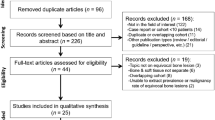Abstract
We report the case of a woman who developed an early relapse of a squamous cell carcinoma (SCC) and was thus restaged twice within a year using [18F]fluorodeoxyglucose (FDG) positron emission tomography (PET). While there was no evidence of metastatic tumor outspread, focally increased FDG uptake was visible in numerous nodes but showed no change during the period between the two PET scans. These nodes, predominantly located at the proximal extremities, ranged in size from about 1 cm to over 6 cm. They were located subcutaneously, showed a red/bluish livid color and were of stout consistency. These nodes occurred first after radiochemotherapy for a non-Hodgkin’s lymphoma (NHL) about 6 years earlier and slowly increased in size and number. One node of the right forearm was resected and ex-vivo beta-imaging, directly measuring the positron emission of the intranodal FDG distribution, was done and showed an overall increased glucose utilization with distinct spots of high metabolism. Histopathological work-up of the tumor showed widespread granulomatous tissue with lymphocyte follicles. Immunostaining showed the tumor to be positive for S100, CD68 and vimentin. Rosai-Dorfman disease (RDD) was diagnosed and no evidence of a potential relapse of the previous NHL was detected. RDD is a rare disease that is associated with the multifocal growth of benign tumors. The lesions are metabolically highly active. The correlation of the beta-imaging and histopathological results showed a high metabolism within granulomatous tissue with more intense metabolism within lymphocyte follicles.




Similar content being viewed by others
References
Braun-Falco O, Plewig G, Wolff HH, Burgdorf WHC (2000) Dermatology, 2nd edn. Springer, Berlin, pp 1663–1664
Brenn T, Calonje E, Granter SR, et al (2002) Cutaneous rosai-dorfman disease is a distinct clinical entity. Am J Dermatol 24:385–391
Ortonne N, Fillet AM, Kosuge H, et al (2002) Cutaneous Destombes-Rosai-Dorfman disease: absence of detection of HHV-6 and HHV-8 in the skin. J Cutan Pathol 29:113–118
Wang KH, Cheng CJ, Hu CH, Lee WR (2002) Coexistence of localized Langerhans cell histiocytosis and cutaneous Rosai-Dorfman disease. Br J Dermatol 147:770–774
Kroumpouzos G, Demierre MF (2002) Cutaneous Rosai-Dorfman disease: histopathological presentation as inflammatory pseudotumor. A literature review. Acta Derm Venereol 82:292–296
Beggs HD, Hain SF (2002) F-18 FDG-positron emission tomographic scanning and Wegener’s granulomatosis. Clin Nucl Med 10:705–706
Menzel C, Döbert N, Mitrou P, Mose S, Diehl M, Berner U, Grünwald F (2002) Positron emission tomography for staging of Hodgkin’s lymphoma—increasing the body of evidence in favor of the method. Acta Oncol 41:430–436
Cremerius U, Farbry U, Neuerburg J, Zimny M, Bares R, Osieka R, Büll U (2001) Prognostic significance of positron emission tomography using fluorine-18-fluorodeoxyglucose in patients treated for malignant melanoma. Nuklearmedizin 40:23–30
Lu D, Estalilla OC, Manning JT, Medeiros LJ (2000) Sinus histiocytosis with massive lymphadenopathy and malignant lymphoma involving the same lymph node: a report of four cases and review of the literature. Mod Pathol 13:414–419
Author information
Authors and Affiliations
Corresponding author
Rights and permissions
About this article
Cite this article
Menzel, C., Hamscho, N., Döbert, N. et al. PET imaging of Rosai-Dorfman disease: correlation with histopathology and ex-vivo beta-imaging. Arch Dermatol Res 295, 280–283 (2003). https://doi.org/10.1007/s00403-003-0431-6
Received:
Revised:
Accepted:
Published:
Issue Date:
DOI: https://doi.org/10.1007/s00403-003-0431-6




